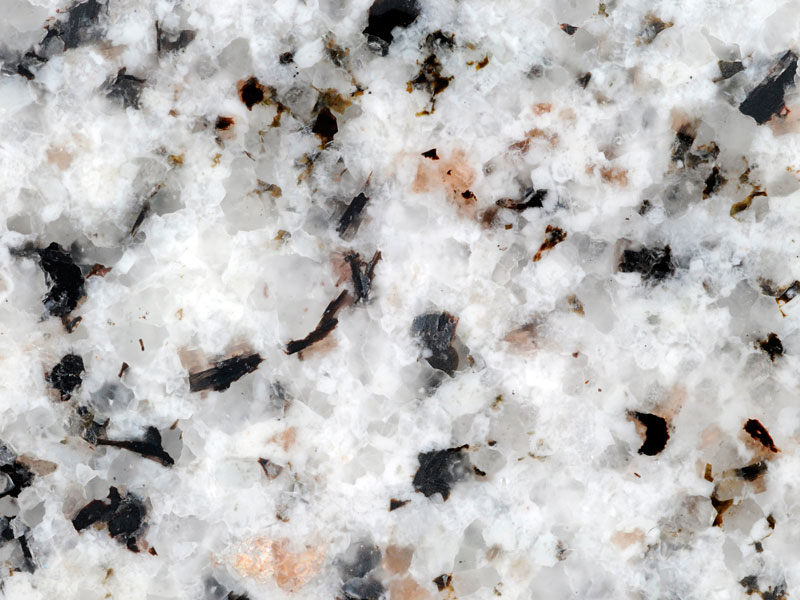Fact sheet
This two mica granite sample comes from a British Geological Survey borehole that was drilled at the Rosemanowes quarry borehole, Cornwall as part of the 'Hot Dry Rock' project that ran from 1977 to 1980. The borehole penetrated the Carnmenellis Granite to over one kilometre depth. The site was chosen because the granite in the area has the highest heat flow in England (120 milliwatts per square metre). The borehole did not develop into an operational geothermal exploitation scheme but the research laid the foundations for similar projects elsewhere.
In thin section the rock contains 100–200 micron diameter orthoclase (which appears mottled and altered), rarer plagioclase grains, quartz, and both biotite and muscovite are common. Biotite is distinguished by its brown pleochroism and black pleochroic haloes caused by radiation damage from zircon grains that sit at the core of each halo. The high heat flow recorded in the granite is the result of natural radiation present in these small grains producing heat throughout the granite.
The United Kingdom Virtual Microscope (UKVM) collection consists of igneous, sedimentary and metamorphic rocks from around the UK.
It is intended as a teaching resource, helping to tell the story of the common rock types and how they form, and reflecting the history of the UK at the margins of the continent of Europe. The collection is a series of teaching sets, for example igneous rocks from the North Atlantic Igneous Province and SW England; high-temperature metamorphic rocks from Scotland and low-temperature metamorphic rocks from Wales; and sedimentary rocks, including English limestones and sandstones.







